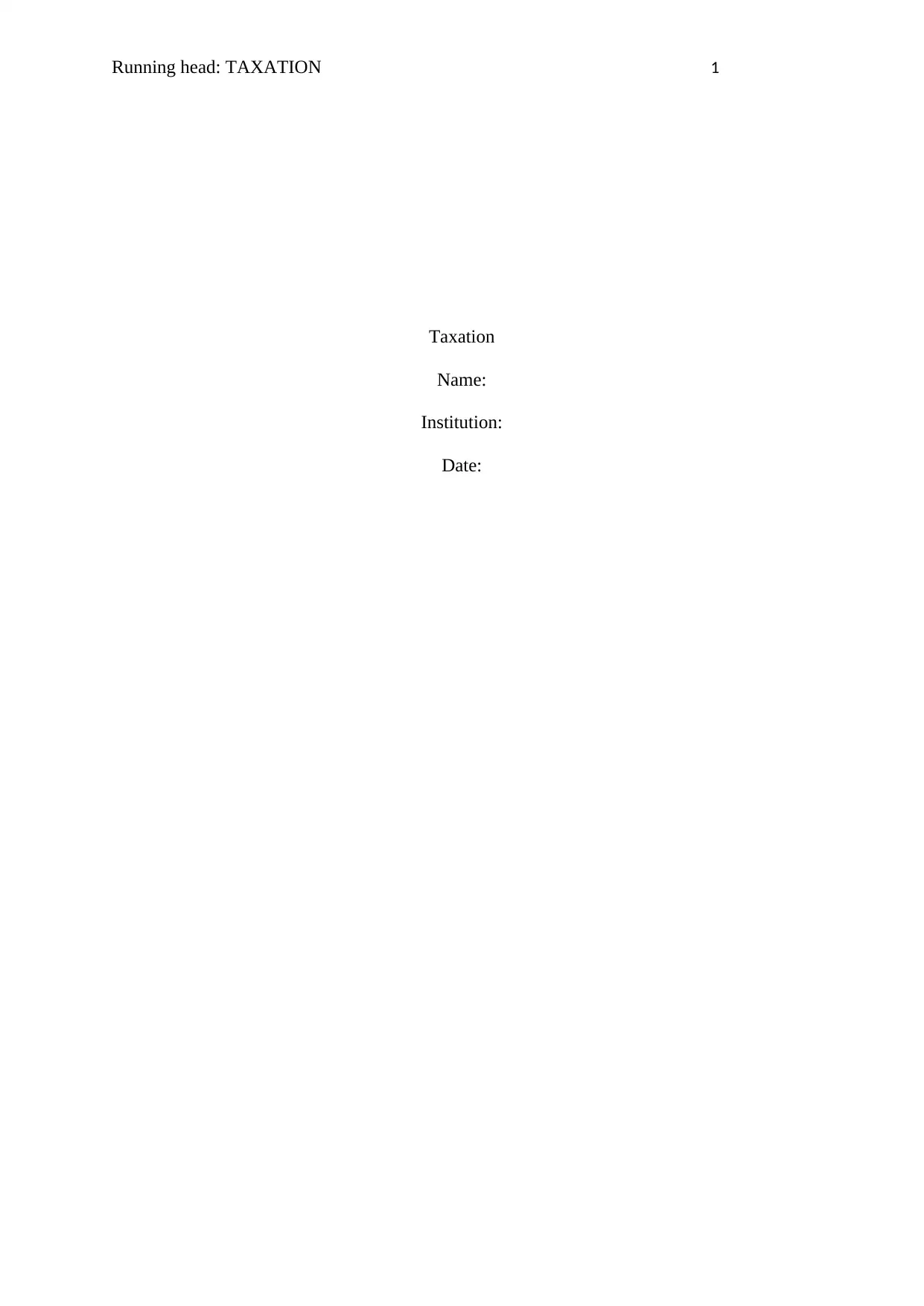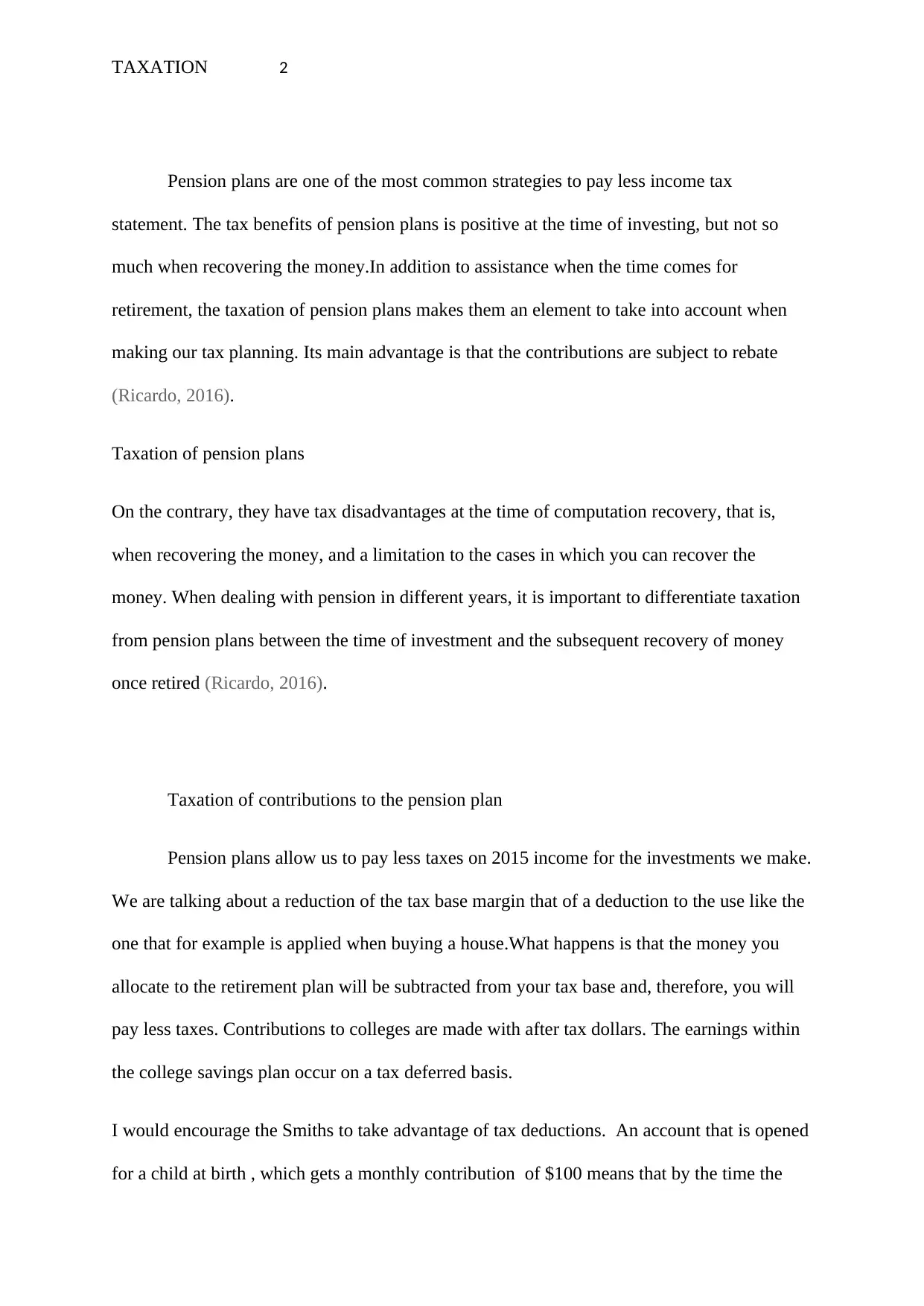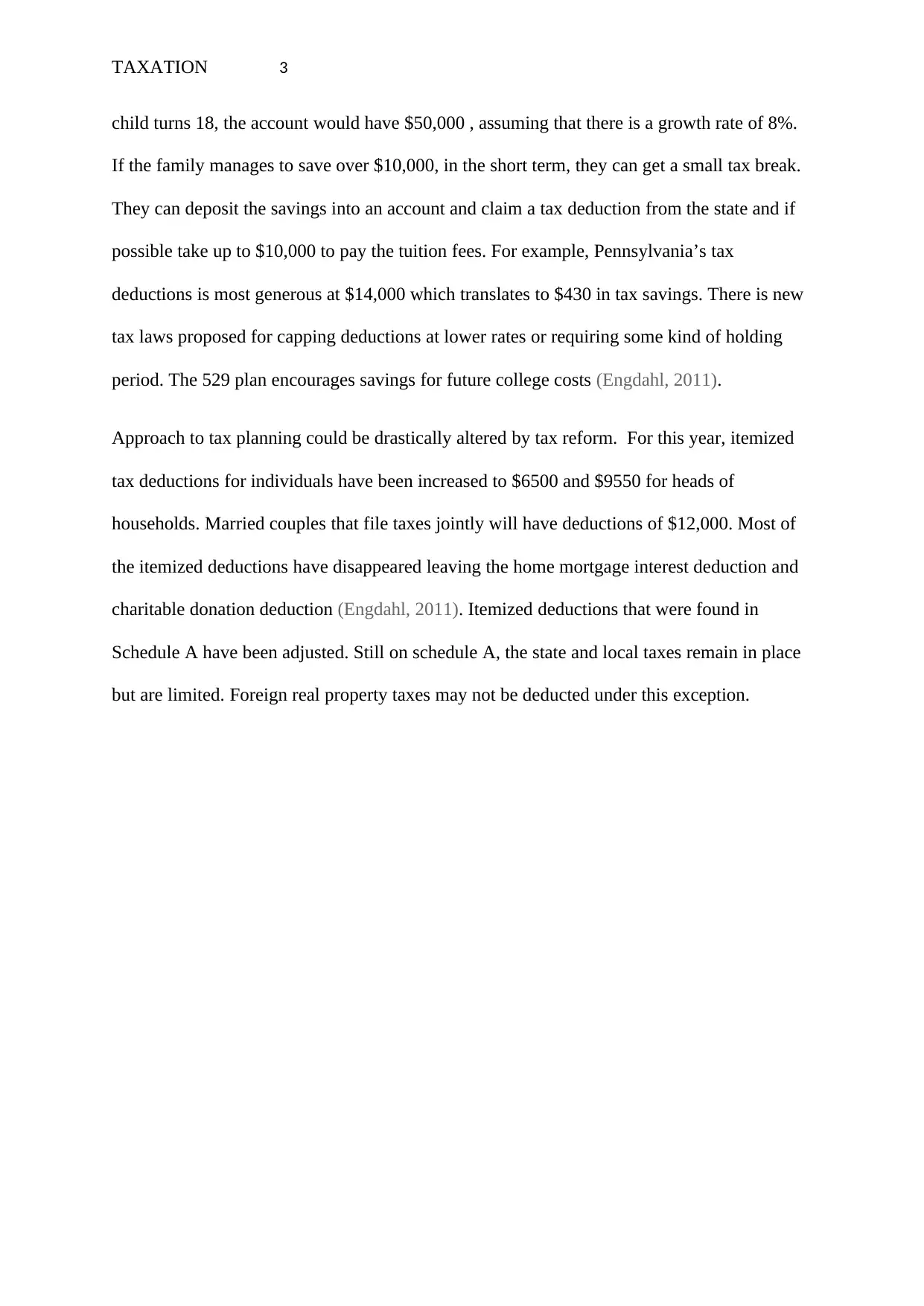Analyzing Taxation: Pension Plans, 529 Plans, and Itemized Deductions
VerifiedAdded on 2023/06/15
|4
|611
|138
Essay
AI Summary
This essay provides an overview of taxation strategies, focusing on pension plans and college savings. It highlights the tax benefits associated with pension plans during the investment phase, noting that contributions are subject to rebate, while also addressing the tax disadvantages during the recovery phase. The essay also discusses the benefits of 529 plans for college savings, emphasizing tax deductions and potential growth. Furthermore, it touches on the impact of tax reforms on itemized deductions, such as those for home mortgage interest and charitable donations. The document concludes by referencing Schedule A adjustments and limitations on state and local taxes, offering a comprehensive look at various tax planning elements.
1 out of 4











![[object Object]](/_next/static/media/star-bottom.7253800d.svg)